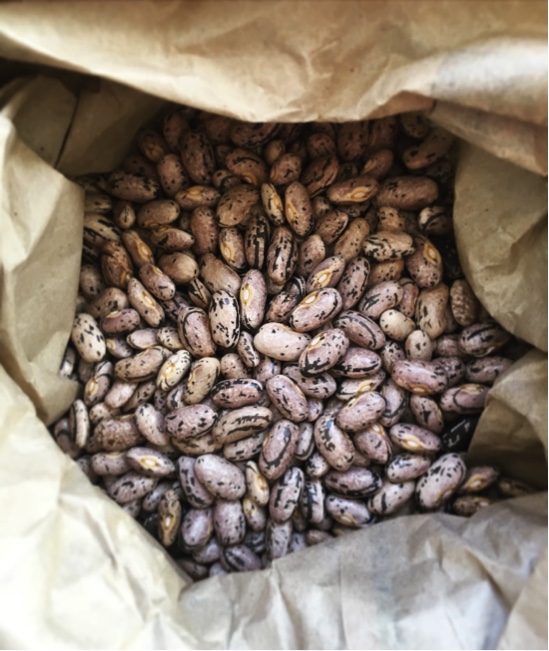WE LOVE
5 WAYS TO STORE FOOD WITHOUT PLASTIC
Written By : Katie Trail @seedblog
One of the dilemmas when deciding to go plastic-free with fresh produce is optimising storage in the fridge. On the one hand, plastic-wrapped herbs and greens is frustrating and wasteful, but on the other hand, plastic helps them stay fresh for longer. So once you've found good plastic-free fruit and veg, how do you avoid wasting it by letting it decay in an open fridge? Well, there are many ways! Note that this post is in no way sponsored, and is based on my personal experience and trial and error over the years.

Veggie swags
These padded organic cotton satchels are tough, reusable and simple genius. I was given some by a friend who didn't want them and, given our crisper is non-existent, I was keen to try these. You need to wet them until they're soaked through, wring them out, then store unwrapped fruit or veg inside for up to a few weeks. If you do this in a crisper, you should find you don't often need to re-wet your swags, however we do need to weekly as our fridge doesn't hold moisture well. They work fantastically with things like root veg, cucumbers, celery, capsicum, corn, etc. They can also be substituted to an extent by wrapping produce in a wet towel. Greens and herbs are best stored with methods described below.
Jars
Glass jars are endlessly reusable and yes, you can freeze with them! As long as you leave a good inch of headroom, especially for liquids (as they expand when frozen), and don't put them in while still hot, you should avoid breakages. Wide-mouthed jars are also best, both for this reason, and that they're far easier to empty (and clean) than narrow bottles. Of course, in the fridge you can store all manner of things. If you intend to store things for a week or more, you can sterilise jars to reduce risk of contamination by heating them in the oven (put them in at the same time you turn the oven on), heat to 100 degrees C, and bake for 15mins once at this temperature. Letting jars cool down before filling them with cold contents also significantly reduces risk of cracking.
Reuse bread and snap-lock bags
Sometimes I find that plastic bags really just are the best for storing certain things! I always reuse things that have crept into our kitchen over the months, like the odd bread bag or snap lock bag. Obviously these have plenty of options for use. I use them to store homemade bread in the freezer, washed greens and random veggies in the fridge, and for small homemade things I gift such as quince paste. We wash out the bags between use when we do the dishes, and hang them to dry.
Opp Shop containers
Living in share houses over many years comes with ebbs and flows of Tupperware collection. Sometimes we have a bursting draw of them, other times we haven't enough. Either way, I never buy containers new anymore because they're so common in Opp Shops! While some people prefer not to have any plastic in their kitchen at all, I'm happy to use second-hand containers for storage and sometimes microwaving - they really do a great job. So if you're in need of kid's lunchboxes, leftovers containers or anything else, make sure you check your local thrift store and I guarantee you'll find something good!
Herbs and spices
I have found through trial and error, and a little internet research, that different herbs store best with different methods. For example, basil does best standing with ends in a glass of water at room temperature (it hates cold and will quickly go brown and limp). Coriander and parsley store best this way but in the fridge, or pre-chopped in an airtight container. Rosemary, thyme, tarragon and oregano are tough and can be frozen in airtight containers, or hung to dry and used as needed. Ginger, turmeric and horseradish all benefit from moisture wicking, stored in the fridge in a paper bag for a few weeks, or frozen in an airtight container for a few months and grated as needed. Lemongrass will keep for months if thinly sliced or grated, then frozen in an airtight container. Of course, don't forget that you can eat all parts of coriander and parsley (the root, stem, leaf, flower and seed)!

For more tips and inspiration, as well as event info, make sure you're following @seedblog on Instagram and Facebook. I love messages, comments and questions, as well as shares of anything you find helpful! Thanks for taking time from your day to read this, legend.
- Katie




